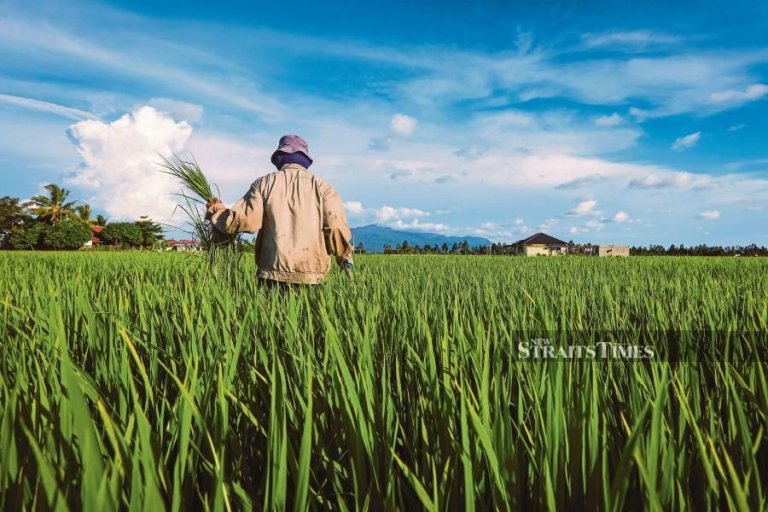Malaysia’s agriculture and food sector has been experiencing significant supply chain disruptions ever since the Covid-19 pandemic hit us in early 2020.
The sector is facing rising costs as producers are still unable to restore foreign labour supply, together with other related problems.
Depreciation of the ringgit has also led to high food prices as Malaysia is heavily reliant on meat and dairy imports. Managing food security during and after the pandemic, therefore, must be given the utmost priority.
The world rice crisis in 1974 and 1975, and in 2008, taught Malaysia the importance of food security and to relook at our agriculture sector.
Due to insufficient supply of rice in the country to meet demand, the effectiveness of the import control system in bringing in rice in times of crisis such as during floods and the pandemic must take centre stage.
Throughout the 12th Malaysia Plan and the National Agrofood Policy (NAP), initiated during the premiership of Tan Sri Muhyiddin Yassin, we started to take bold proactive measures.
Under the NAP, the government continued to foster modernisation in the agro food sub-sector by leveraging Industrial Revolution 4.0 to improve food security and safety via an increase in productivity, high income generation and attracting a younger generation of agropreneurs.
To support padi cultivation, the government under Muhyiddin allocated RM1.57 billion in the 2021 Budget via the Legal Paddy Seed Incentive, Federal Government Paddy Fertiliser Scheme, Paddy Production Incentive Scheme, Racun Padi Bukit and the Paddy Price Subsidy Scheme.
And achieving 75 per cent in self-sufficiency level (SSL) led to Malaysia’s 39th position, among 113 countries, in the Global Food Security Index (GFSI) in 2021.
This, however, was not reflected in the welfare of padi farmers, who played an important role in sustaining the SSL. The average net monthly income of a farmer from padi farming was only RM550.
What has gone wrong? Even though the rice industry received the biggest government allocations — RM1.1 billion to RM2 billion between 2015 and 2019 — the SSL and farmers’ productivity and income still did not improve. This indirectly created the perception that the agriculture and food sector is not competitive due to lack of knowledge, old age and rejection of modern technology.
It’s time to learn from our neighbour. Singapore improved its position in the GFSI at No. 15 last year with the highest score of 100 per cent in agricultural import tariffs, food safety net programmes and food safety and access to policy commitment.
With a population of 5.7 million — only one per cent of land is available for food production and seven per cent of Singapore’s food grown locally — it is now applying the vertical model to urban agriculture and also experimenting with rooftop gardens and vertical farms to feed its people.
The Singapore Food Agency has adopted the strategy of “three food baskets”, the foremost being the diversification of food sources.
It also boosts local food production through funding for agriculture research and technology adoption, creative planning of farm spaces and consistent efforts to drum up community support for local farmers.
The time has come for our agriculture sector to be revitalised. Our agricultural activities and their effectiveness in combating poverty and unemployment need to be demonstrated.
One way is by having a holistic and long-term approach such as eliminating monopsony in rice purchasing and retailing.
We should also focus on space-planning, invest in agriculture food technology, increase research and development in food production and develop local agriculture specialists.
Modernising farming through IR 4.0 should be planned meticulously by identifying the level of readiness of farmers to switch to new technology, continuous support for technology transfer and dissemination, including maintenance and troubleshooting.
These could lead to reforms in the industry and through intensive efforts, poverty among farmers could be reduced.
It is imperative that NAP 2021-2030 (NAP 2.0) announced last year, together with the National Food Security Action Plan 2021-2025, be implemented by the present government to revitalise our agriculture and food sector.
This comprehensive, integrated policy also serves as a long-term strategy to transform agrofood output and productivity into a sustainable and competitive sector that can boost economic growth and improve the wellbeing of the people.
The writer is a research analyst at Institut Masa Depan Malaysia
The views expressed in this article are the author’s own and do not necessarily reflect those of the New Straits Time
DATE: 13 January 2022
Image source: https://assets.nst.com.my/images/articles/KEDAH_padiman_1642003234.jpg
SOURCE: New Straits Times – https://www.nst.com.my/opinion/columnists/2022/01/762519/learn-singapore-how-revitalise-our-agricultural-sector




